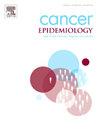Survival rate of colorectal cancer and its relation to the individual and geographical variations in Malaysia, 2013–2018
IF 2.4
3区 医学
Q3 ONCOLOGY
引用次数: 0
Abstract
Background
Colorectal cancer (CRC) ranks as the second most deadly cancer globally, accounting for nearly 10 % of all cancer-related deaths in 2021. Despite advancements in CRC management, significant disparities in survival rates persist, even in highly developed countries. These lower survival rates are particularly evident in socioeconomically deprived areas and regions with limited healthcare accessibility. Our objective was to assess the impact of individual and geographical variations on CRC survival outcomes.
Methods
This retrospective cohort study utilised secondary data from the National Cancer Registry. Adult CRC patients diagnosed between 1st January 2013 to 31st December 2018 (6 years), with documented cause of deaths were included. Kaplan-Meier survival analysis was conducted to determine the 5-year survival rate and median survival time, while multilevel Cox proportional hazard analysis was carried out to identify factors that contribute to the overall CRC survival.
Results
A total of 18,513 CRC patients were diagnosed between 2013 and 2018, with 10,819 deaths occurred during follow-up. The 5-year CRC survival rate was 42 % with median survival time of 36 months (95 %CI: 34.46–37.54). After adjusting for covariates in multilevel Cox proportional hazard regression analysis, the study found that older age, male gender, Malay and other ethnicities, living in Peninsular Malaysia, rectal, rectosigmoid and anal cancers, advanced disease stage, receiving other, none or delayed treatments, and living in less densely populated areas were significantly associated with a higher risk of mortality (p < 0.05).
Conclusion
This study identified several sociodemographic, clinical and population density factors that can influence CRC survivals in Malaysia. These findings provide valuable insights for policymakers to focus on high-risk populations with poor survival, in providing cancer control services and enhancing existing cancer prevention programmes to improve survival outcomes.
2013-2018年马来西亚结直肠癌生存率及其与个体和地域差异的关系
结直肠癌(CRC)是全球第二大最致命的癌症,2021年占所有癌症相关死亡人数的近10% %。尽管在结直肠癌管理方面取得了进展,但即使在高度发达的国家,存活率仍然存在显著差异。这种较低的存活率在社会经济贫困地区和医疗保健服务有限的地区尤为明显。我们的目的是评估个体和地理差异对CRC生存结果的影响。方法:本回顾性队列研究利用了国家癌症登记处的辅助数据。纳入了2013年1月1日至2018年12月31日(6年)诊断的成年结直肠癌患者,并记录了死亡原因。采用Kaplan-Meier生存分析确定5年生存率和中位生存时间,采用多水平Cox比例风险分析确定影响结直肠癌总生存率的因素。结果2013 - 2018年共诊断出18513例结直肠癌患者,随访期间死亡10819例。5年CRC生存率为42 %,中位生存时间为36个月(95 %CI: 34.46-37.54)。在多水平Cox比例风险回归分析中调整协变量后,研究发现,年龄较大、男性、马来裔和其他种族、居住在马来西亚半岛、直肠癌、乙状直肠和肛门癌、疾病晚期、接受其他、未接受或延迟治疗、居住在人口较少的地区与较高的死亡风险显著相关(p <; 0.05)。结论:本研究确定了影响马来西亚结直肠癌存活率的几个社会人口学、临床和人口密度因素。这些发现为决策者在提供癌症控制服务和加强现有癌症预防规划以改善生存结果方面关注生存差的高风险人群提供了有价值的见解。
本文章由计算机程序翻译,如有差异,请以英文原文为准。
求助全文
约1分钟内获得全文
求助全文
来源期刊

Cancer Epidemiology
医学-肿瘤学
CiteScore
4.50
自引率
3.80%
发文量
200
审稿时长
39 days
期刊介绍:
Cancer Epidemiology is dedicated to increasing understanding about cancer causes, prevention and control. The scope of the journal embraces all aspects of cancer epidemiology including:
• Descriptive epidemiology
• Studies of risk factors for disease initiation, development and prognosis
• Screening and early detection
• Prevention and control
• Methodological issues
The journal publishes original research articles (full length and short reports), systematic reviews and meta-analyses, editorials, commentaries and letters to the editor commenting on previously published research.
 求助内容:
求助内容: 应助结果提醒方式:
应助结果提醒方式:


